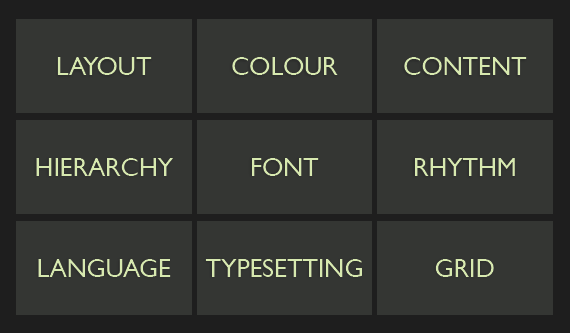
Language
Language is entwined with typography. Type can be defined as the display and arrangement of language. As designers, we should care about this.Typesetting
Typesetting is the process of taking raw text and marking it up. Making headings, lists, emphasised text etc.Grid
The typographic grid is a foundation upon which layouts can be built.Hierarchy
Conceptually, content has levels of importance. Typographically, Hierarchy visualises this.Font
The font used to display the content.Rhythm
How the arrangement and layout of the type aids reading.Layout
Combining type with other graphic elements such as photographs, illustrations, video or other UI elements.Colour
Colour, when discussed in typographic terms, can mean two things: red, green, blue etc. or dark or light typographic colour. Dark typographic colour is dense type–tight leading or line height, tight whitespace. Light typographic colour is the opposite.Content
One of the unfortunate things on the web is that, generally, we’re designing not knowing what the content is. We have an idea of what the content might be, but when dealing with content management systems and the flow of data, it’s very difficult to know. But content is an important part of typographic design and this connection is one of the casualties of the web standards mantra of separating content and presentation. When we do that, it’s very difficult to tell stories with design.
Source via Mark Boulton.